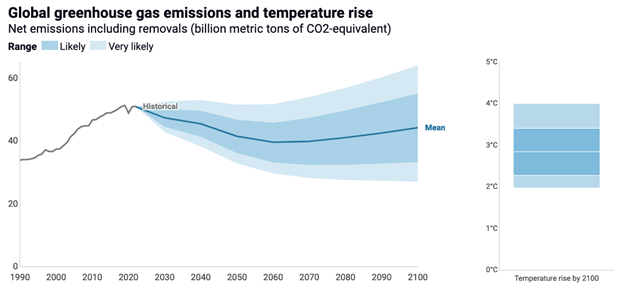
Why Temporary Carbon Storage in Forests Has Little Climate Value: Part 2
Timelines are key when deciding the value of forest carbon storage. Unless we rapidly change course, temperature stabilization could take a century or longer, and forest carbon storage would need to last just as long.
This is part two of a two-part blog series. To read part one, please visit this page.
My earlier post explained why using forest carbon to offset CO2 emissions causes higher planetary temperatures. The problem is intractable because forest carbon contracts last only a few decades—a century at most—while CO2 emissions last effectively forever.
Instead of using forest carbon as an offset, some have proposed that climate-conscious companies should invest in carbon credits as a supplemental activity that complements their primary focus on emission reductions. A company could still buy forest carbon credits but wouldn’t report lower net emissions or otherwise claim to have offset their own emissions.
Moving away from offsetting is a start, but we still need to know how long forest carbon must stay out of the atmosphere in order to contribute to climate mitigation. I set out to answer this question by developing a science-based framework for valuing temporary carbon storage.
The core insight is this: In order to support the Paris Agreement’s goal of stabilizing planetary temperatures, temporary carbon storage has to last at least as long as it takes to stabilize planetary temperatures.
That might sound simple enough, but it has uncomfortable implications. For one thing, we don’t know how long it will take to stabilize temperatures, which depends most critically on how quickly the whole world slashes global emissions. While there are more positive signs than ever before about the world’s ability to decarbonize, global emissions are still growing, not shrinking. We are not on course for even the minimum 2°C limit agreed to under the 2015 Paris Agreement—current policies put us closer to something like 3°C by the end of the century.

Unless the world rapidly changes course, temperature stabilization could take a century or longer. In that case, forest carbon storage would need to last just as long to make a difference. Few, if any, of the commitments being financed today can credibly make that claim.
Alternatively, today’s forest carbon commitments could deliver climate benefits if we slash global emissions to net zero on a similar timeframe—but only if they aren’t used as offsets, and only if the carbon outcomes are calculated accurately. (Unfortunately, they are overwhelmingly used as offsets and their actual carbon benefits have been vastly exaggerated.)
Because we don’t know which future we’ll have in advance, the forest carbon bets being placed today could end up delivering little or no climate benefits tomorrow.
There are no easy answers when it comes to forest carbon. Decades of advocacy have promoted the idea that forest carbon offsets lead to both climate and conservation benefits. But it’s increasingly clear that the best-case outcome is a tradeoff where conservation benefits come at the expense of climate liabilities. Worse still, low-quality offsets dominate today’s markets and fail to deliver meaningful benefits to climate or conservation.
To be clear, there is no path to a stable climate that doesn’t confront the tropical deforestation crisis and mobilize significant resources to stop it. But it’s time to recognize that carbon offsets are failing to deliver the necessary funding just as badly as they fail to justify ongoing CO2 emissions.
When I speak with colleagues who work in forest conservation, I’m struck at how urgently new resources are needed to combat tropical deforestation. The gravity of the situation is difficult to overstate, which may explain why no one wants to hear that carbon finance falls short of its promised win-win outcomes. But as with so many other difficult issues in energy and climate policy, sometimes the most important step is admitting when something isn’t working.
Forests are incredible ecosystems. We do them a disservice by thinking of them only in terms of carbon, or only to address the environmental consequences of other choices in energy and agricultural systems. Meanwhile, sustaining the fictions required to equate temporary carbon storage with the permanent climate harms of fossil CO2 pollution isn’t doing anyone any favors. It’s time to treat forest carbon as a co-benefit that flows from sound conservation practices and elevate non-climate objectives with the dignity they deserve.
Danny Cullenward
Senior FellowDanny Cullenward is a senior fellow at the Kleinman Center. He is an economist and lawyer focused on the scientific integrity of climate policy with additional appointments at the Institute for Responsible Carbon Removal at American University and Google.

